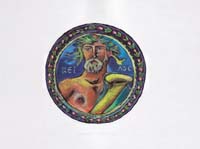
28.5.05
21.5.05
12.5.05
RTP Shows Editors the Way to Create Maps with Curious
Portuguese broadcaster RTP creates a lot of maps for news and documentaries. To share the load, RTP editors are learning that you don’t need to be a graphic designer to make great maps with World Maps
Breaking news waits for no man, especially not broadcast graphics departments who are responsible for creating the maps needed to illustrate them. If a plane goes down or a terrorist bomb explodes, the news team wants a map showing where the action happened immediately, not in a few hours when someone in graphics has had a chance to copy it from an Atlas.Yet in many television stations, copying or photographing maps from an Atlas is still the most common way of creating these vital illustrations. It's laborious, time-consuming and ultimately not very accurate. And it is almost impossible to convey station identity or branding via a map that is effectively drawn by hand."Until recently, this was the situation at RTP," says Nicolau Tudela, senior graphic designer at the Portuguese state broadcaster. "We had a basic mapping software, but it was very difficult to use. Often we would simply photograph a map and digitise it using Quantel, Hal and Paintbox. It worked but it took a long time and it was hard to achieve really professional results."Tudela has been part of the RTP graphics team for seven years and is also a fine artist who regularly exhibits in Portugal. When he first saw Curious World Maps software, he was quick to spot its potential as a creative as well as a functional tool."We looked at early versions of the software on CD ROM and then investigated it more thoroughly through the Curious Software website. It was apparent that this was very clever software, very easy to use and ideal for a specific task we faced - creating maps that furthered the brand identity of RTP, which at that stage was implementing a new look and new logo."RTP installed the software and immediately put it to use creating map templates that were specific to the television station. These incorporated the new logo and included animated symbols to illustrate news stories such as fires and car crashes.Tudela adds: "We now create eight or ten maps a day using Curious World Maps. These are used across three different types of news bulletin, including our early morning Channel 1 bulletins and our news programmes during the night and on Channel 2. Because the software is so fast, we can react to breaking news in minutes rather than hours. We recently had a situation where a serious demonstration broke out on the Portuguese-Spanish border near Rosal de la Frontera and within 15 minutes we had created a map showing exactly where the action was taking place."RTP is now using Curious World Maps software to illustrate documentaries such as the history series Bombordo and a forthcoming series, Planeta Azul, about the voyage of a Portuguese ship on the North Portuguese coast. RTP is also capitalising on the templating capabilities built-in to World Maps by training editors to use it. Editors need only select the map locations and details they require, then apply one of the styles defined by the graphics department, to create a professionally-designed map in the station’s format. Giving editors the ability to create their own maps makes their work more efficient, and frees up time in the graphics department for other tasks."The maps add an extra dimension to documentary programmes and really help the viewer place the action in specific geographic locations," Tudela adds. "For the graphics department, the software is a valuable tool because it has made it possible to create very high quality graphics with ease and in a very short space of time."
Subscrever:
Mensagens (Atom)







